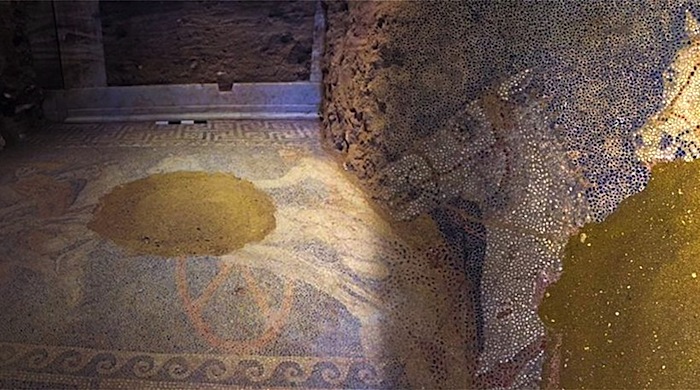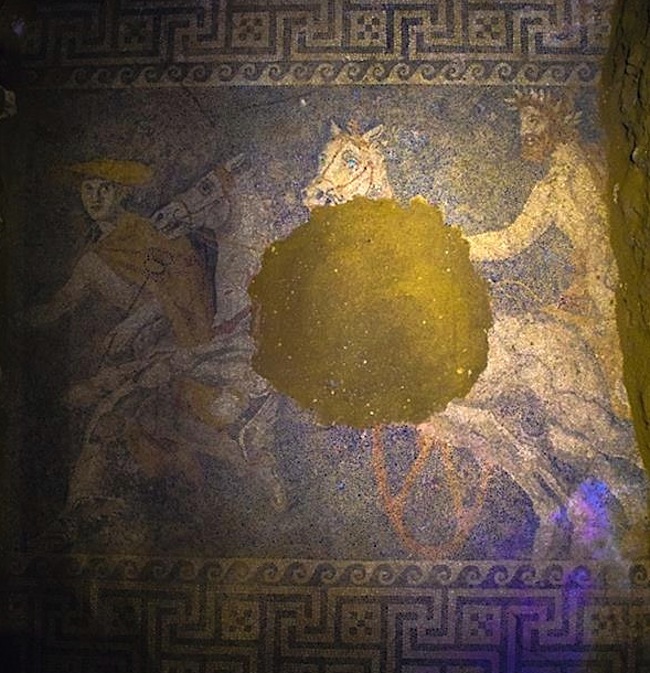
According to the Greek Ministry of Culture, the beautiful mosaic was discovered in the second chamber of the tomb, the site of the Caryatids‘ discovery. The colorful floor was laid with white, black, grey, blue, red and yellow pebbles and depicts a chariot in motion. Hermes, the messenger of the gods, is pictured in front of the chariot.

The mosaic showcases the artist’s ability to portray the figures, horses and colors in exquisite detail.
According to a Culture Ministry announcement, Hermes is depicted here as the conductor of souls to the afterlife.
The stunning artwork, which has yet to be fully uncovered, spans the entire floor of the second chamber. It currently measures 4.5 meters in width and 3 meters in length. The central scene is surrounded by a decorative frame, 0.60 meters in width, featuring a double meander, squares and a wave-curl design.
According to archaeologists, a section of the mosaic floor has been destroyed. The Amphipolis team was able to recover the disturbed pebbles during the excavation process, however, and plans on being able to eventually piece the mosaic back together.
The ministry says that archaeologists have dated the mosaic to the last quarter of 4th century B.C. (325-300 B.C.), consistent with their belief the grave contains the remains of a contemporary of Alexander the Great, the ancient Greek King of Macedonia, who conquered the Persian Empire and reached present-day India, Afghanistan and Uzbekistan in a whirlwind campaign, from 334 to 323 B.C. The grave may be that of a relative or general of Alexander’s, archaeologists have speculated.
Alexander himself, who died in Babylon in present-day Iraq at age 32, in 323 BC, is believed to have been buried in Egypt.
See all the latest news from Greece and the world at Greekreporter.com. Contact our newsroom to report an update or send your story, photos and videos. Follow GR on Google News and subscribe here to our daily email!



